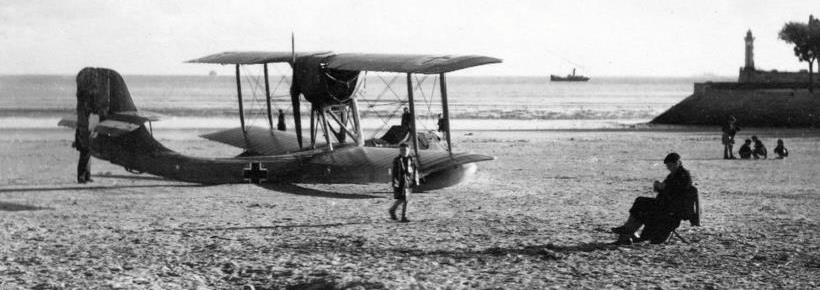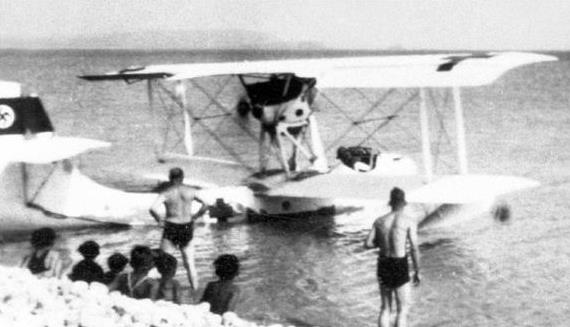The Schreck-FBA 17 school biplane seaplane had been mass produced for the Navy since 1924, and continued to be produced when the German troops invaded France in May-June 1940. Nearly fifty copies were thus captured, notably at Hourtin. At least one of them was exposed to the public with black crosses. Just like the CAMS 37E found in the same place, they served officially for rescue at sea, or even as a liaison and training aircraft for German pilots, but they seem to have rather used these devices for pleasure trips along the Atlantic coasts.
The aircraft was developed in the early 1920s. to serve on the ships of the French fleet. For its time, it was a fully operational aircraft, intended for reconnaissance and coastal patrols. It was a one-post biplane with wings of various sizes. The wooden body with excellent contours was lined with plywood, the only keel and rudder were built as a unit with the body. The original powerplant was Hispano-Suiza 8Aa engine with 150 hp, but most production aircraft were equipped with Hispano-Suiza 8Aa engines with 180 hp. or 8Аd engine.
Part of the aircraft was adapted for the needs of civil aviation, turning them into transport flying boats. The latest options included catapult-launched naval models, as well as Type 171 and Type 172 aircraft, equipped with air-cooled star-shaped engines instead of water-cooled.
In total, during the serial production, 230 copies of the boat were produced, of which 141 were reconnaissance, mainly in the FBA 17HE 2 variant. All aircraft of this brand were excluded from the French naval aviation in the mid-1930s.
In 1926, the Polish government purchased 18 FBA 17 planes for the fleet, in versions HE2 (flying boat) and NMT2 (amphibian) without ejection devices. They were used both for patrolling in the Baltic Sea and for training pilots of naval aviation. By 1938, all FBA 17 were withdrawn from the fleet and sent to the reserve. Nevertheless, several were in a condition suitable for flights, but the Pole did not dare to use them in battles with the Germans. After the occupation of Poland, the Germans got at least one Polish FBA 17, which they used in one of the training schools.
In 1929, seven FBA 17HMT 2 (registration numbers K-331 - K-337) were received by the Brazilian Air Force. For them, the training function was determined and used until 1937 inclusive.

| Type |
Two seat trainer and reconnaissance flying boat |
| Engine |
1 Hispano-Suiza 8Ac |
| Dimensions |
Length 8,94 m , height 3,20 m , span 12,87 m , wing area 36,50 m2 , |
| Weights |
Empty 850 kg, loaded , max. take off weight 1125 kg |
| Performance |
Max.. speed 150 km/h , cruising speed 122 km/h , range 360 km, endurance , service ceiling 3000 m , climb |
| Type |
Werk.Nr |
Registration |
History |
|
|
|
|



